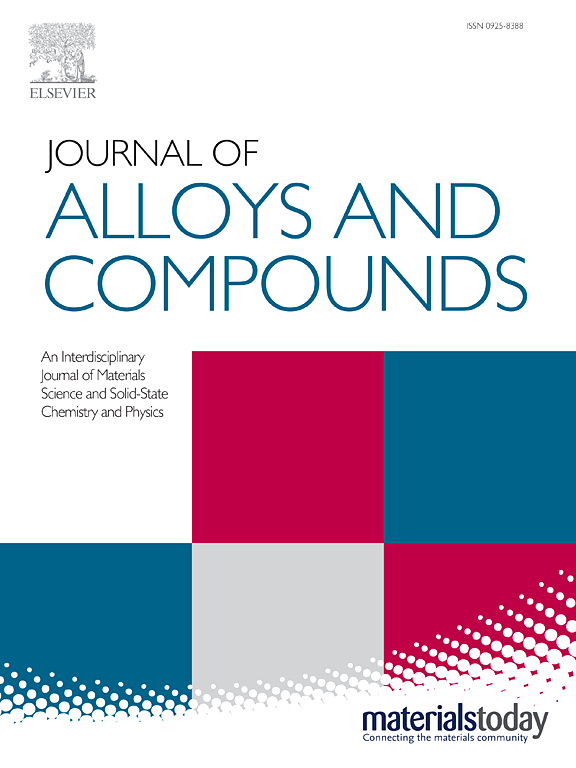Novel MIL-53(Fe)/SnS2 Z-scheme heterojunction as photoactivator of peroxymonosulfate for efficient degradation of RhB
IF 5.8
2区 材料科学
Q2 CHEMISTRY, PHYSICAL
引用次数: 0
Abstract
The construction of heterojunction photocatalysts with high efficiency for activating peroxymonosulfate (PMS) to degrade organic pollutants has aroused wide concern. Herein, a novel MIL-53(Fe)/SnS2 Z-scheme heterojunction photocatalyst was successfully prepared by solvothermal method, which was used for the degradation of rhodamine B (RhB) in the catalyst/PMS system under visible light irradiation. The results showed that the MIL-53(Fe)/SnS2-3% (3% is the mass ratio of SnS2 to MIL-53(Fe)) displayed the highest activity reaching a RhB (10 mg/L, 100 mL) removal rate of 85.6% within 60 min with catalyst and PMS dosage of 0.1 and 0.1 g/L, respectively. The corresponding reaction rate constant exceeded that of MIL-53(Fe) and SnS2 by a factor of 1.39 and 6.39 times, respectively. The enhanced performance of MIL-53(Fe)/SnS2/PMS system can be attributed to the Z-scheme heterojunction formed between MIL-53(Fe) and SnS2, which inhibits the recombination of photogenerated electron-hole pairs. The PMS activation mechanism by MIL-53(Fe)/SnS2 was proposed based on the detailed catalyst characterization, degradation efficiency tests, electron paramagnetic resonance and radical quenching experiments. Furthermore, the MIL-53(Fe)/SnS2 exhibited good stability and suitability for different environmental conditions. This work provides a valuable guide for the development of Fe-based metal-organic frameworks (MOF) composites for photoactivation of PMS to remove organic dyes in aquatic environment.

求助全文
约1分钟内获得全文
求助全文
来源期刊

Journal of Alloys and Compounds
工程技术-材料科学:综合
CiteScore
11.10
自引率
14.50%
发文量
5146
审稿时长
67 days
期刊介绍:
The Journal of Alloys and Compounds is intended to serve as an international medium for the publication of work on solid materials comprising compounds as well as alloys. Its great strength lies in the diversity of discipline which it encompasses, drawing together results from materials science, solid-state chemistry and physics.
 求助内容:
求助内容: 应助结果提醒方式:
应助结果提醒方式:


